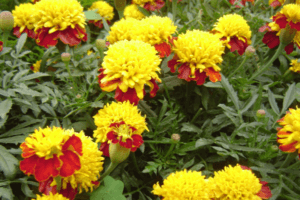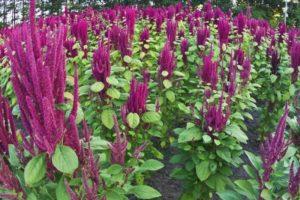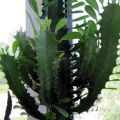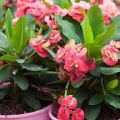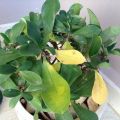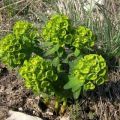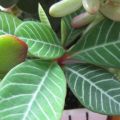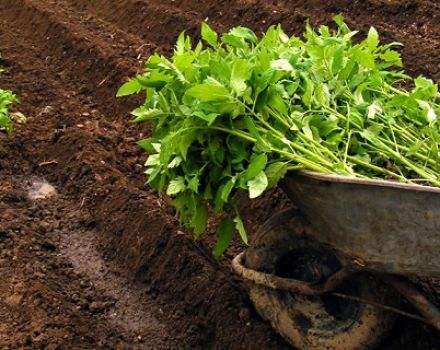The benefits and harms of indoor milkweed, medicinal properties and contraindications
The well-known houseplant - euphorbia, can be found in office premises, on window sills in apartments, in green corners of various institutions. Indoor spurge belongs to poisonous plants, what are the benefits and harms of a beloved flower and why has it become popular among flower growers?
Content
- 1 The chemical composition of the plant
- 2 Features of different types
- 3 Benefits and harm to the body
- 4 What are they using?
- 5 How culture is used in traditional medicine
- 5.1 For removing age spots and freckles
- 5.2 Tincture for the treatment of fungal infections, shingles, eczema and warts
- 5.3 Decoction for stomach problems
- 5.4 Decoction for diseases of the nervous system, for shortness of breath and to eliminate epileptic seizures
- 5.5 Home depilation with milkweed juice
- 5.6 Anti-lichen milk
- 5.7 Infusion for removing calluses on the feet
- 6 Precautions or why euphorbia is dangerous
- 7 First aid for poisoning
- 8 Who is contraindicated to use the plant
The chemical composition of the plant
A distinctive feature of the plant is a thick dense stem filled with burning juice - poisonous milk. When drops of milk come into contact with your hands, they dry out quickly and are difficult to wipe off from any surface.
The poisonous liquid contains:
- Apple acid;
- euforbion;
- rubber;
- flavonoids;
- coumarins;
- alkaloids and resins.
Any poison in small amounts can be helpful. The sap of the plant is used for healing and antiseptic treatment of wounds and abrasions on the skin. Before using milkweed, assess the benefits and possible harms of the treatment.
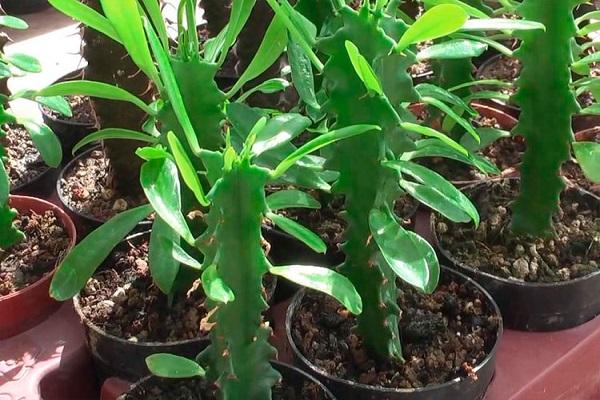
Features of different types
Euphorbia is a representative of the Euphorbia family, a succulent plant, the second name is euphorbia. This genus has over 2000 varieties. The plant is grown at home on windowsills, in the garden, greenhouses. The following types are popular for home cultivation:
- Euphorbia Mila is a thorny, tree-like shrub with small oval leaves and small red flowers.
- Euphorbia white-veined - has a ribbed thick stem. The leaves are located only at the top of the plant, large, oval with white veins.
- Euphorbia triangular - has a triangular stem, strewn with thorns, small green leaves are formed on the edges of the trunk, can reach a height of one meter, forms branches with age.

Euphorbia is often confused with cacti, but these plants belong to completely different families. There are species called "false cacti". The following varieties are suitable for growing in the garden:
- Euphorbia multiflorous is a perennial succulent with a height of more than 3 meters, with a dense toothed triangular trunk, blooms in early spring, needs shelter in winter.
- Fischer's spurge is grown in beds with medicinal plants, popularly nicknamed "the man-root", it is believed that with the help of the plant, you can defeat various types of tumors and disinfect open wounds.
- Cypress spurge - forms a compact decorative bush, is used to decorate alpine hills, in winter it needs additional shelters.
All types of euphorbia secrete a milky poisonous substance as juice. It is not difficult to grow these succulents at home, the plants are unpretentious and undemanding to the soil. It is important in the process of caring for the plant to prevent waterlogging of the soil, milkweed should be located on the sunny side.
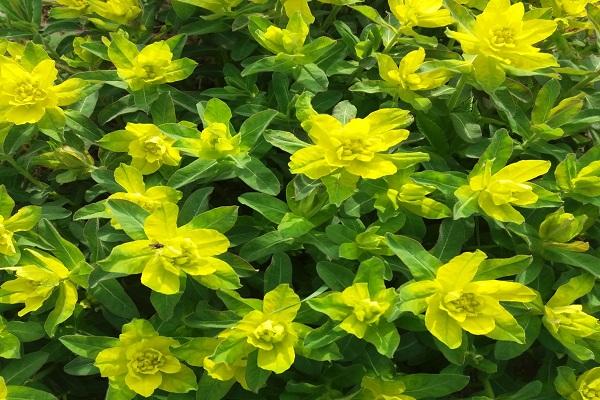
Benefits and harm to the body
The tart sap of the plant can cause a variety of allergic reactions when it comes into contact with the skin. Transplanting a bush, carrying out measures for caring for a succulent should be done with caution. If part of the plant is eaten by a child or pet, then acute poisoning may occur.
If the juice gets into your eyes, rinse them urgently. It should also be remembered that drops of milk on the floor or walls will eat into the coating and are difficult to clean off.
The main beneficial properties are the ability of milkweed to disinfect and heal wounds, to treat insect bites. Since ancient times, the thorny plant has been used as an antitumor agent. Succulent juice fights leukemia and has an active immunostimulating effect. Is spurge harmful or not? The answer to this question depends on the correct and timely use of the plant.
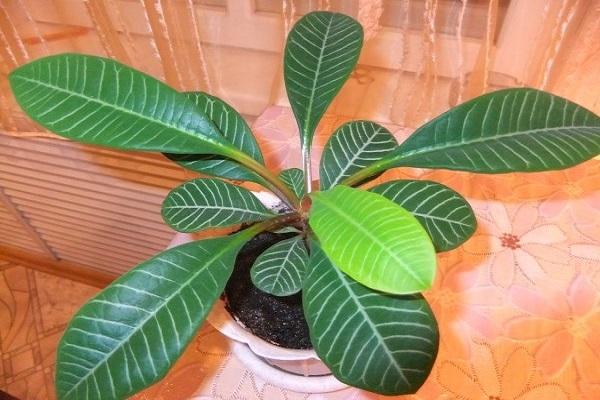
What are they using?
For medicinal purposes, you can use various parts of the thorny plant. When preparing the medicinal product, it is recommended to be careful and use gloves.
Milkweed juice
The caustic juice of milkweed is poisonous, but it is it that is often used for medicinal purposes, using the medicinal properties of the plant. A small amount of milk is applied to festering skin wounds for a long time. The juice will tingle, the sensations are unpleasant, but the product is able to completely remove harmful bacteria from the cut and protect the wound from fungi.
The juice is used to cauterize warts and treat old calluses. A prickly succulent plant will help you get rid of freckles and whiten your skin.

Leaves and stems
In ancient times, the medicinal milkweed leaves were dried together with a grated or finely chopped stem. It turned out a kind of powder, which was sprinkled on open wounds or made a tincture, which was used during outbreaks of infectious diseases, for example, chickenpox.
Roots
Alcohol tinctures are made on the roots of the plant, which can alleviate suffering during gout attacks. A decoction of the roots has been used for gastrointestinal problems, epileptic seizures and problems with the nervous system. The funds should be used in small quantities, an overdose can cause allergic reactions.
Seeds
From the seeds of the plant, oil can be obtained, which is successfully used in folk medicine for cosmetic purposes. The oil improves the health of hair, prevents hair loss. Among the peoples of Africa it is used as a laxative.

How culture is used in traditional medicine
The false cactus was used as a medicinal plant in everyday life of different peoples of the world. Various parts of the plant are used as medicines for all kinds of diseases. It is important to properly prepare the raw materials and create suitable storage conditions.
For removing age spots and freckles
It is enough to lubricate the face with fresh milkweed juice. Before and after the procedure, the skin is treated with a nourishing fat cream to avoid dry skin and its subsequent peeling.
Important! Before using the product, you should check your propensity for allergy to euphorbia.A small amount of milk is applied to the wrist and waited for a few minutes.
If everything is in order, hives and unbearable itching did not occur, treatment with milkweed can be started.
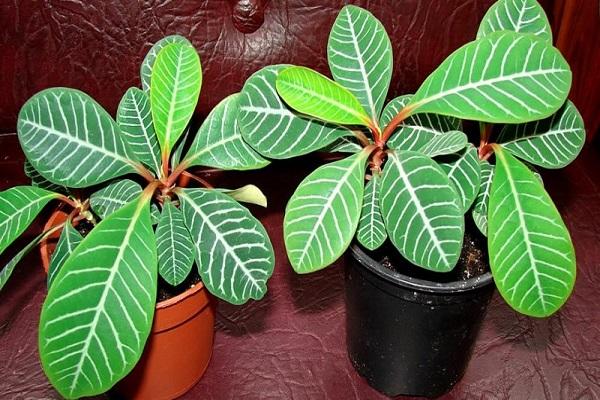
Tincture for the treatment of fungal infections, shingles, eczema and warts
You can apply fresh plant juice by treating problem areas with a cotton swab. A different recipe is often used. Use a tincture from the leaves and stems of the plant. The drug is used in the form of baths, the effect of milkweed on the skin in this case is considered less aggressive.
Decoction for stomach problems
The use of a decoction of milkweed roots as a laxative and pain reliever. The drug is prepared as follows: 5 grams of dried root is poured into 0.5 liters of water and boiled for about 10 minutes. The broth is cooled and used for a week, one tablespoon three times a day before meals.
Decoction for diseases of the nervous system, for shortness of breath and to eliminate epileptic seizures
A decoction of leaves and roots is used. It is best to use fresh parts of the plant, which must be washed and immersed as a whole in a container of water. Cook the ingredients for 15 minutes. Then the roots and leaves are squeezed out and removed. The broth is stored in the refrigerator and taken one tablespoon a day.
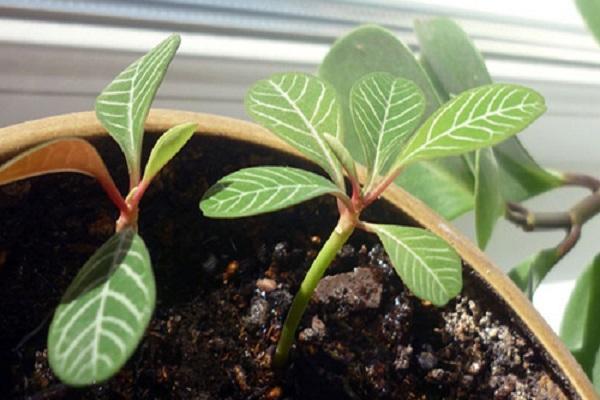
Home depilation with milkweed juice
The magic milk will get rid of unwanted body hair. Milkweed juice is dried on glass or in a ceramic plate. The dried milk is scraped off with a knife and a little water is added to a mushy state. The product is applied to problem areas and rubbed in with massage movements.
Anti-lichen milk
Baths and decoctions of various parts of the plant are used, as a rule, the stems and roots of the culture are used. You can use compresses with a healing decoction.
Infusion for removing calluses on the feet
There are two treatment options: baths in alcohol solution or applying live fresh juice pointwise to problem areas. Before the procedure, the skin must be steamed, and then apply a fat cream to problem areas.

Precautions or why euphorbia is dangerous
When working with milkweed, one should always be careful, we must not forget that the plant is poisonous and can cause poisoning of the body. They put on gloves and protect their eyes from splashing milkweed juice.
Skin burn
From getting the sap of the plant on the skin, a burn can form, the place will become painful. In this case, the area of the skin where the milk has gotten must be rinsed with cold running water, ice can be applied. If a person is prone to allergies, take an antihistamine medication.
Milkweed juice in the eyes
It is associated with discomfort and a threat to vision. The eyes will burn badly, they must be urgently rinsed with clean cold water. If there is a partial loss of vision, consult a specialist. If your eyes are very red, you can use Cromhexal eye drops. A bacterial infection can develop from a burn of the mucous membrane of the eye; as a prophylaxis, the eyelids are lubricated with erythromycin ointment.

Poisoning with milkweed juice
It can occur in an acute form: vomiting will open, the tongue will swell, and cramps will occur in the stomach. It is important at this moment to remain calm and not to panic. If all these signs occur, you need to call a doctor or ambulance. You can try to do a gastric lavage yourself, then take activated charcoal or Enterosgel.
If an allergic reaction occurs simultaneously with the poisoning, antihistamines are used, before the arrival of the doctor Enterosgel is not necessary in this case.
First aid for poisoning
Algorithm of actions in case of poisoning:
- Call an ambulance.
- Drink 3 liters of cold water and induce vomiting.
- Take activated charcoal or Enterosgel.
- Try to lie down and wait for a doctor.
If a person feels itchy skin or his tongue is swollen, they take Suprastin or another antihistamine.

Who is contraindicated to use the plant
All allergy sufferers are contraindicated in the use of folk remedies in the treatment of various diseases. You need to get a recommendation from your doctor.
Do not use spurge:
- Children under the age of 12.
- Pregnant and lactating women.
- People with individual intolerance to the substance.
When using any traditional medicines, unpredictable reactions and contraindications may occur. Before treatment, consult a doctor.
